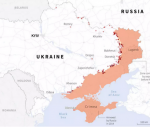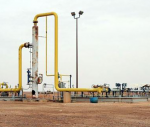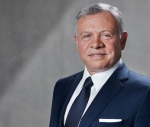You are here
The toll of Putin’s wars
Sep 08,2018 - Last updated at Sep 08,2018
STOCKHOLM — Wars are expensive, as the Russian people are now learning. The Kremlin is pursuing military adventures in eastern Ukraine and Syria, and though these conflicts are limited in scope, one wonders if the country can really afford them.
As the world’s 11th largest economy, Russia can manage in the short term. But the long term is quite another matter. From 2008 to 2016, Russia increased its military expenditures from 3.3 per cent of GDP — which roughly corresponds to the current US level, to 5.3 per cent, according to the authoritative Stockholm International Peace Research Institute.
According to the Russian government’s own fiscal statistics, which remain surprisingly open, its civilian expenditures in occupied Crimea come to around $2 billion per year. And while there are no public data on its presence in eastern Ukraine, it is safe to assume that the costs there are roughly the same, in which case Russia is spending $4 billion per year, 0.3 per cent of GDP, on these two operations alone.
Yet, beyond military expenditures, Russia is also incurring the costs of lost trade and investment, as well as escalating sanctions, which are more than enough to condemn the country to stagnation for as long as its wars last. In July 2014, the United States and the European Union imposed sanctions on Russia’s finance, oil and gas, and defence technologies sectors, in response to its military aggression in Ukraine’s Donbas region. So far, these measures have been effective. In global finance, the dollar is king. And because every dollar passes through US banks, dollar transactions are ultimately subject to the US Department of the Treasury’s jurisdiction. Through financial sanctions, the US can thus starve Russia of foreign investment.
In August 2015, the International Monetary Fund (IMF) estimated that Western sanctions would immediately reduce Russia’s real (inflation-adjusted) GDP by 1-1.5 per cent. In the medium term, however, the IMF concluded that sanctions “could lead to a cumulative output loss…of up to 9 per cent of GDP, as lower capital accumulation and technological transfers weaken already declining productivity growth.”
After being cut off from the dollar, Russian corporations have had no choice but to pay off debt as it comes due. As a result, Russia’s total foreign debt declined from $732 billion in June 2014 to $519 billion in December 2015, and it has stayed near that level ever since.
Similarly, Russia’s international currency reserves declined from $510 billion at the end of 2013 to a low of $356 billion in March 2015. Since then, they have recovered to $458 billion, owing to Russia’s persistent and large current-account surplus. But, from 2015 to 2017, foreign direct investment in Russia amounted to less than 2 per cent of GDP per year, on average, almost half what it had been in the preceding years, reflecting not just falling investment, but also reduced technology imports.
Through all of this, Russia has managed to maintain macroeconomic stability and external balances, but it has suffered a minor decline in output and a major decline in the standard of living. During the four sanction years from 2014 to 2017, real disposable incomes plunged by 17 per cent, and investment slumped by 12 per cent, though GDP fell by only 0.5 per cent in this period.
Meanwhile, Russia and Ukraine have been imposing escalating trade sanctions on each another. As a result, their mutual trade fell by 80 per cent between 2012 and 2016. The trade war has hurt Ukraine more; but Russia, too, has lost a significant export market and a major source of imported military equipment. Once Russia’s most important energy customer, Ukraine has not imported any natural gas from Russia since November 2015.
Russia’s asset seizures in Crimea and Donbas have also been costly. For example, under a 1998 Ukrainian-Russian bilateral investment treaty, Ukrainian companies have filed at least eight lawsuits against the Russian Federation at the Permanent Court of Arbitration in The Hague. The Ukrainian state-owned energy giant Naftogaz and its subsidiaries alone are claiming $7 billion in damages, while Oschadbank, Privatbank and Ukrnafta are seeking compensation of $1 billion each. One case brought by a group of Ukrainian companies has already been won, and the rest are likely to go the same way. At this rate, Russia’s illegal confiscations will probably cost it at least $10 billion.
Naftogaz has also brought a successful case against the Russian energy giant Gazprom. In February, the Stockholm arbitration court ruled that Gazprom must award Naftogaz $2.56 billion in damages for breach of a previous agreement between the two companies. Gazprom has since refused to pay, and Naftogaz has responded by going after its assets abroad. Gazprom’s disregard for a commercial arbitration verdict could prove costly indeed.
With no solution to the Ukraine conflict in sight, sanctions will likely remain in place for the long term. Sanctions tend to be sticky, because the conflicts that spur them usually multiply and evolve. For example, in April, the US imposed additional sanctions in response to Russia’s interference in the 2016 US presidential election.
Those new measures have hit the Russian ruble and stock market hard. And now, the US Congress is leading a new offensive, following Putin and Trump’s suspicious summit in Helsinki this summer. Having already enacted the Countering American Adversaries Through Sanctions Act last year, a bipartisan congressional coalition will soon approve even more severe sanctions, most likely hitting Russian sovereign debt and state-owned financial institutions. The mere threat of more US sanctions has already roiled the Russian market.
While Russia’s annual growth rate is stuck at an anemic 1.5 per cent, the annual civilian, legal and other related costs of its military aggression are now at least 3-4 per cent of GDP, or $45-60 billion. The Kremlin may be managing for now. But sooner or later, these mounting costs will have serious political consequences.
Anders Åslund is a senior fellow at the Atlantic Council in Washington and author of the forthcoming book “Russia’s Crony Capitalism”. Copyright: Project Syndicate, 2018. www.project-syndicate.org












